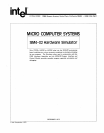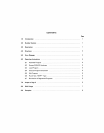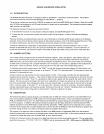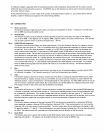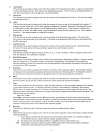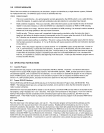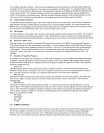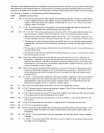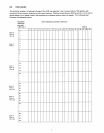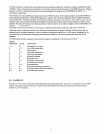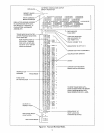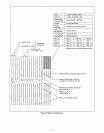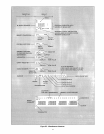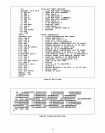
A
breakpoint
register
is
associated with
the
simulated execution mode
of
operation, allowing
the
user
to
pre-set a location
which will cause an
interrupt
before execution.
The
BREAK key on
the
teletype
may also be used
to
interrupt execution and
some
other
types
of
output.
During'simulated
execution,
a
count
is
kept
of
the
number
of
simulated machine cycles (i.e., sync pulses) used
by
the
test
program,
to
assist in checking
out
programs with critical timing problems.
4.0 DIRECTIVES
lin
Binary conversion
This directive accepts a
single (decimal) number, and
types
out
its equivalent
in
binary. A maximum
of
12 bits (num-
bers
to
4095) may be accomodated
at
once.
=n
Decimal
adder
This directive accepts a string
of
(decimal) numbers separated by plus and minus signs, and
types
out
the
algabraic
sum,
modulo
4096.
If
the
algebraic sum
is
negative, 4095
is
logically added
to
it
to
give a positive result. This directive
may be used
to
perform binary
to
decimal conversion thus: =Bnnnn
Or,s,e
RAM/ROM
chip
assignment
This directive
must
be entered before any
other
letter directive. If
the
first character after
the
0
is
a space
or
comma,
the
current
values are
typed
out.
Then,
or
immediately after
the
Q,
three
parameters separated by commas
or
spaces
are required.
If
any
of
the
three parameters
is
omitted,
or
if a RETURN
is
typed
instead
of
the
first parameter,
the
current
values will be unchanged. r
is
the
(decimal)
RAM
register number (0-63) which
is
used as
the
lowest
in
the
block allocated
to
ROM.
The simulation program has
no
way
of
preventing
the
test
program from accessing
RAM
loca-
tions allocated
to
simulated ROM, so
the
user
must
use care
in
selecting a value
for
this parameter which will reduce
the
likelihood
of
improper access.
If
r
is
greater
than
63,
the
previous value
is
used. s
is
the
starting address
of
the
ROM
segment
to
be simulated.
Any
attempt
to
execute
an instruction with an address less than this
number
will result
in
an out-of-bounds interrupt. e
is
the
(decimal) ending address
of
the
ROM
segment
to
be simulated.
Any
program
access
to
ROM
locations greater than this address will result
in
an out-of-bounds interrupt. This directive clears
the
option
word
to
zeroes.
Z Zero
This directive
simulates
the
hardware reset function, and clears
to
zero all simulated registers, counters, and all RAMs
not
allocated
to
program.
The
Q directive executes a Z each time
the
parameters are changed.
In
Input
This directive accepts a sequence
of
(binary) numbers and stores
them
in
consecutive simulated
ROM
locations, begin-
ning with location n. Spaces, commas, returns, and linefeeds may occur with
any
frequency
or
pattern between
the
individual numbers.
Input
is
terminated
by
a free-standing letter F in
the
sequence. An ASCII SOH (control
A)
may be
used
to
introduce
a (decimal)
number
which, like n, becomes
the
new starting address
for
subsequent instruction bytes.
The
program
counter
in
the
current
stack level
is
altered
by
this directive.
Pn,m Punch
This directive
will punch
out,
in
"BNPF"
format
with location numbers,
the
contents
of
the
simulated
ROM
beginning
at
location n (decimaJ), and ending
with
location m.
The
currently
selected program
counter,
and
the
breakpoint
regis-
ter
are altered by this directive. Four inches
of
leader and trailer are punched on
the
tape, with an
"F"
after
the
last
location. If
the
BREAK
key
on
the
teletype
is
depressed between locations,
the
typeout
will be aborted, with no trailer.
Both
the
breakpoint
register and
the
program
counter
in
the
current
stack level are altered by this directive.
Mn,i Memory
input
This directive accepts a sequence
of
(decimal) numbers (0-15) and stores
them
sequentially
in
consecutive
RAM
loca-
tions, beginning
in
register n (decimal, 0-63) and location i (decimal, 0-19).
If
the
starting location
is
in
main
memory
(i
less
than
16),
only
main memory locations are filled.
The
next
number
after
the
one
which goes into register r, digit
15, goes into register r + 1, digit
O.
If
the
starting location
is
a status character
(i
greater
than
15), only status characters
are
filled.
The
sequence ends with a carriage return following
the
terminal delimiter
of
the
last number.
Dr, n Dump RAM
This directive
types
out
in decimal
the
contents
of
each
RAM
location
(both
main
memory
and status)
of
n registers,
beginning with register
r.
The
typeout
may be
ended
prematurely by depressing
the
BREAK key.
2



